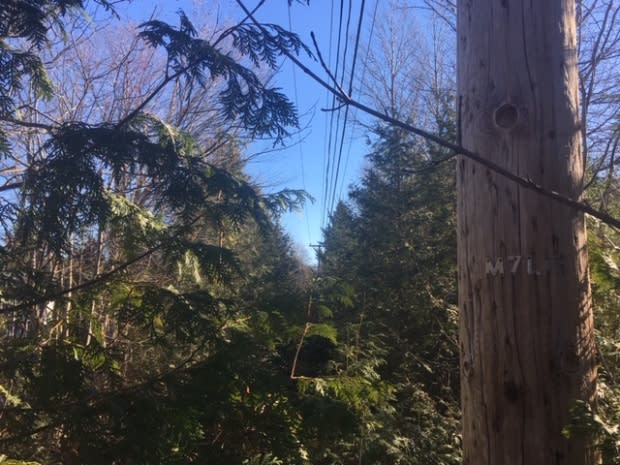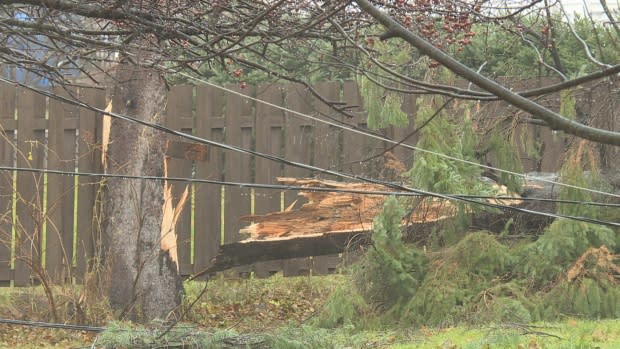NB Power blames backyard power poles for extended blackouts
Power lines running behind homes for aesthetic purposes are being blamed by NB Power for problems it's having to fix outages in a timely manner — even though the utility helped create those layouts in the first place.
"Back-lot construction is what caused the delays," said NB Power's President Gaëtan Thomas last week.
He's talking about why some power outages, including the massive blackout that swept through New Brunswick on Nov. 3, can take days to fully restore.
"The areas where we are having the most difficulty in these storms is back-lot construction, especially in cities like Fredericton and Rothesay, where the time to restore is much longer," said Thomas.
The term "back-lot construction" refers to neighbourhoods where power lines were built to run down narrow right-of-ways and cut through the backyards of subdivisions, rather than traditional placement on the street where wires are more visible.
It's been a favourite design feature of property developers for decades and NB Power has long accommodated requests for it — even though the utility now finds the system has been causing a number of problems in major storms.
Slowing down restoration for everyone

Backyard power lines are often closer to larger trees and when they come down on a line during a storm, sometimes heavy equipment can't reach an area to quickly fix the problem.
This slows down restoration for everyone, according to Ross Galbraith, the business manager of the union that represents NB Power line workers.

"Customers want the power in behind the house because it doesn't ruin the sight lines in front of their residence," he said.
"The issue is in behind homes it's hard to get at infrastructure to repair it or fix it when there is a power outage, and so that is slowing things down too."
Strong winds knock out power

At the beginning of November, a severe wind storm caused widespread power outages across New Brunswick. At the peak of the storm, more than 100,000 NB Power customers were without electricity. It was the third worst blackout in the utility's history.
After the storm, some NB Power customers were without electricity for nearly a week because accessing downed power lines behind homes is an ongoing problem.
"The trees in the back lot are what's causing the longest delays," said Thomas.
"There's no way to get a truck in there. There [are] fences that are built (by homeowners). It takes a long time."
But if back-lot power lines are a poor design that have been worsening outages, there's little evidence NB Power did much to stop them.
Expanding right-of-ways

At hearings three years ago, Tony O'Hara, NB Power's vice-president of engineering, said the utility works closely with housing developers and those who want power lines in the backyards of their subdivisions, only had to ask for them.
"When we are building for a subdivision, NB Power lays out the format of how that subdivision would be serviced and sometimes that's based on the requests of the developer," said O'Hara.
"For example, they may be looking for some optional alternatives like underground or back-lot construction or standard front lot construction and based on that we would lay out the most efficient way of ensuring that we can provide service."
In Rothesay, most subdivisions have power lines running through backyards of homes, even those built more than 50 years ago.
In older neighbourhoods, like in the Highland Ave area in Rothesay, many of the residential right-of-ways are thick with large trees and underbrush.
Thomas said he is fed up with the utility having to access downed lines in suburban neighbourhoods by foot, when there is a major outage underway.
He plans to approach mayors with a plan to cut wider paths than the current six metre standard.
"I'm going to go further now because it is the second severe wind storm and we need to expand our right-of-ways," said Thomas.
"Twenty feet, which is a typical 6 metre right-of-way, is really not enough for these kind of storms."

